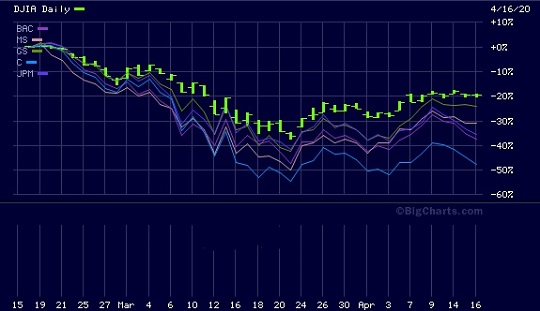In the world of investing, day trading stocks can be an exhilarating and potentially profitable venture. However, it requires careful research and analysis to identify the right stocks for day trading. This is where scanning for day trading stocks becomes crucial.
By using effective scanning tools and techniques, you can uncover opportunities and make informed trading decisions.
In this article, we will explore the basics of day trading stocks and guide you through the process of setting up your scanning tools, identifying potential trades, incorporating technical and fundamental analysis, managing risks, refining your strategy, and practicing paper trading.
So let’s dive in!
The Basics of Day Trading Stocks
Day trading involves buying and selling stocks within the same day to take advantage of short-term price fluctuations. Traders actively monitor the market and make quick decisions based on their analysis.
Scanning for day trading stocks helps filter through numerous options to find those that meet specific criteria for potential trades, saving time and increasing the likelihood of profitable opportunities. However, day trading comes with risks, including volatility and liquidity risks inherent in short-term strategies.
Understanding these risks and implementing effective risk management strategies is essential for success in day trading.
Setting Up Your Scanning Tools
To effectively scan for day trading stocks, you need reliable scanning software that suits your needs. Start by researching popular scanning software options available in the market such as Trade Ideas, Finviz, and TC2000. Consider features like real-time data, customizable filters, and technical analysis tools.
Read user reviews to gain insights into the user experience and reliability of the software.
Once you have chosen your scanning software, customize your scanning criteria based on your trading strategy. Identify key parameters such as volume, price volatility, chart patterns, technical indicators, or fundamental catalysts. Fine-tune your scans by experimenting with different combinations of parameters to find the most effective settings.
Continuously refine and adjust these settings based on market conditions and performance analysis.
By setting up reliable scanning tools and customizing them to suit your needs and trading strategy, you can streamline the process of identifying potential day trading stocks. This proactive approach increases your chances of finding profitable opportunities while saving you time and effort in the long run.
Identifying Potential Day Trading Stocks
To effectively scan for potential day trading stocks, focus on two key factors: volume and price volatility.
High relative volume indicates liquidity and interest, making a stock more attractive for day trading. Utilize scanning software filters to quickly identify stocks with high relative volume, setting thresholds based on average daily volume or percentage increase in volume over recent days.
Price volatility is crucial as it affects profit potential and risk. Understand volatility indicators like Average True Range (ATR) or Bollinger Bands to gauge a stock’s price range and potential movements. Narrow down your options using scanning software’s volatility filters by setting minimum and maximum thresholds for these indicators.
By considering both volume and price volatility, you can identify potential day trading stocks that align with your strategy. Balancing these factors is essential as each trader has different preferences and risk tolerances.
In summary, effective identification of day trading stocks involves analyzing volume and price volatility using scanning software’s filters. Combining these factors increases the likelihood of successful day trades.
Incorporating Technical Analysis into Scans
To effectively scan the market and identify trading opportunities, incorporate technical analysis. Chart patterns provide insights into market psychology, signaling potential breakouts or reversals. Familiarize yourself with common patterns such as bull flags or head and shoulders.
Utilize scanning tools to identify these patterns in real-time accurately, seizing opportunities as they occur.
Apply indicators like MACD or RSI to confirm trades objectively. These indicators identify overbought/oversold conditions, trend strength, or momentum shifts. Integrate indicator scans seamlessly with your strategy by configuring software to align with your preferred criteria.
This filters stocks based on favorable technical conditions, increasing the probability of profitable opportunities.
Incorporate technical analysis into your scanning process for informed decision-making and increased chances of success in day trading.
Leveraging Fundamental Analysis in Your Scans
Fundamental analysis is crucial in day trading as it helps traders understand the factors that drive stock prices. One important aspect is considering news catalysts, such as earnings reports and product launches, which can significantly impact stock values.
By staying informed about these events and configuring scanning software with filters based on them, traders can identify stocks with significant price movements driven by news catalysts.
Incorporating fundamental analysis into scans provides a broader perspective on a company’s financial health and stability, allowing for more informed trading decisions.
Managing Risk in Day Trading Stocks
To protect your capital and minimize losses in day trading stocks, it is crucial to establish effective risk management rules. This includes setting predetermined stop-loss levels for every trade and calculating appropriate position sizes based on your risk tolerance.
Additionally, utilizing scanning software can help you identify stocks with specific risk factors such as low float combined with high short interest or susceptibility to manipulation or pump-and-dump schemes. By implementing these risk management strategies, you can mitigate potential risks and increase the chances of successful day trading.
Refining and Optimizing Your Scanning Strategy
To refine and optimize your scanning strategy, continuous learning and adaptation are crucial in the dynamic field of day trading. Regularly reviewing past trades and scanning results is essential to identify patterns, strengths, and weaknesses in your approach.
By analyzing the performance of your scans, you can make informed decisions to refine and optimize your criteria.
Adjusting your scanning criteria based on performance is another key aspect of optimization. Experiment with different parameters and observe their impact on the success rate of your scanned trades. This iterative process allows you to fine-tune your strategy and increase its effectiveness over time.
Efficient scanning techniques can save you valuable time during the trading process. Applying filters is one such technique that narrows down the number of results generated by your scans. Additional filters like market capitalization, sector, or price range can help streamline your search for potential trading opportunities.
Setting up alerts for key criteria or patterns is another useful tip for efficient scanning. By configuring alerts within your scanning software, you can be notified when specific criteria or patterns are met. This ensures that you don’t miss out on potential trading opportunities while focusing on other tasks.
In summary, refining and optimizing your scanning strategy requires a combination of continuous learning, reviewing past trades, adjusting criteria based on performance analysis, applying filters to narrow down results, and setting up alerts for key criteria or patterns.
These practices contribute to a more effective day trading approach by enabling you to make informed decisions and maximize potential trading opportunities while saving time in the process.
Practicing Paper Trading with Your Scans
To gain confidence and refine your trading strategy, paper trading is a valuable tool. By simulating trades using virtual accounts, you can practice executing trades based on your scans without risking real money. Utilize paper trading platforms provided by brokers or specialized simulators to replicate real market conditions.
Keep track of the success rate of your paper-traded scans to assess the effectiveness of your scanning strategy. Use this opportunity to fine-tune your approach and build the skills needed for successful trading. Embrace paper trading as a stepping stone towards achieving your trading goals.
[lyte id=’sP9u2oiwikU’]







